An Aztec Tlachtli warrior
By Felipe Solís
The Spanish king, Charles V (Carlos V), and his court must have been completely stunned when a group of Aztec ball players from Mexico – whose lands had recently been conquered in the the king’s name in the early 16th century – demonstrated their ability to hit a rubber ball with their hips. It was Hernando Cortés, the conqueror of the Aztec empire, who, on one of his return trips to the Spanish Peninsula, took these players with him, causing great admiration among the Europeans of the time.
The public, unaccustomed to a public spectacle of half-naked bodies, could easily appreciate the muscular contractions in the bodies of these players, since their only attire was their maxtlatl – the loincloth traditionally used by men – and leather protectors for their buttocks, knees and ankles.
In addition to their movements, which were both elegant and virile, spectators were impressed by the speed and force of the rebound of these spherical objects made of rubber, a material native to the Americas, unknown until then in the Old World, where the balls were made of rags or leather, which made them slow and heavy.
What these men were playing is what we call Prehispanic ball game or ulama, the Aztec word derived from ollin, which means movement, struggle, and union of opposites, which in turn is derived from the root ulli or rubber. Other names for this game are tlachtli and pok-ta-pok, depending on the area where it is played.
Blood that renovates life
Although on occasions the ball game was played only as a sport or for entertainment, from ancient times the ulama had a predominantly ritual divination purpose. It was used to divine the Sun’s destiny, in order to guarantee the preservation of the cosmic and universal order.
Death by sacrifice was integrated into the symbolism of Pre-Hispanic religion and cosmogony and was an essential part of some of ancient Mexicans’ sacred rituals. In these rites, the blood that was spilled became an element that contributed to fighting the adverse forces of the gods of darkness. The ball symbolized the Sun, whereas the players represented stellar beings. In this ritual, the two teams -each with one to seven men- confronted each other, some supporting the movement of the Sun, others trying to stop it. The player who made a movement contrary to the course the ball should have –same as that of the Sun- was decapitated so as to, with his death, avert the fatal occurrence of the extinction of the Sun and, with it, the end of the Universe.
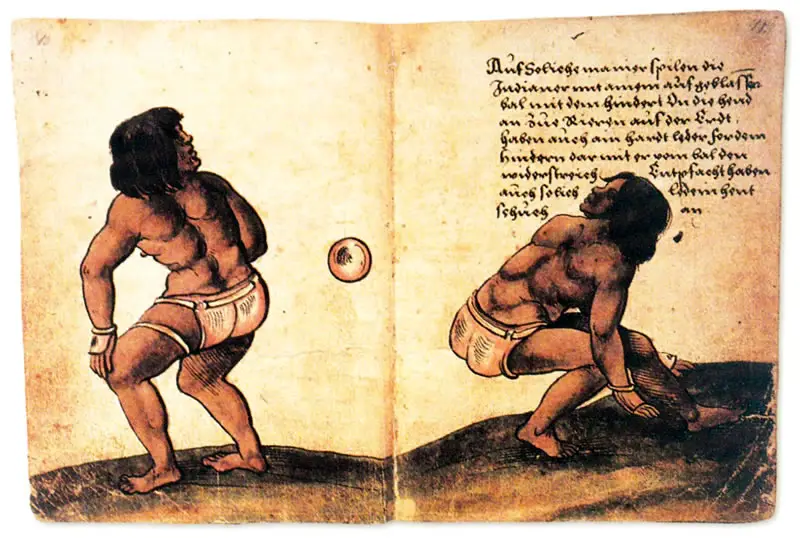
Spanish documents on the players
But the symbolism of the ball game wad, with it, the end of darkness. It was also a propitiatory fertility ritual: the blood of the decapitated player represented rain, the precious liquid that nourished the fields and allowed plants to strive and, therefore, men to be fed and life to continue. Because of this, at the end of the sacred ulama, there were neither victorious nor vanquished teams: the decapitated players didn’t ever lose because their sacrifice was considered an honour since, after all, it meant the triumph of the cosmic order.
The Tlachco or Ball Court, a sacred space
Although present-day ulama players can play in open areas or esplanades and before any type of audience, in Pre-Hispanic times this ritual’s symbolism necessarily required a sacred and closed space that reproduced the celestial setting where the solar movement took place.
Some researchers believe that the ball game originated among the Olmecs -the first inhabitants of the Gulf of Mexico’s coasts, in approximately 1500 B.C. However, in none of the great Olmec cities of Veracruz or Tabasco has there yet been found any vestiges of ball courts, the most significant evidence of the presence of this ritual sport. The oldest known ulama court was found in Chiapas and has been dated between the year 600 B.C. and 100 A.D. From this time and up until the European conquest, at the beginning of the Sixteenth Century. in all of the territory known as Mesoamérica (which stretches from northwestern Mexico down to Central America) the generalized practice of the ball game required a specific architectural structure.
In general terms, this structure consisted of a large patio with a peculiar shape that brings to mind the capital letter “I”, or perhaps two “T”‘s joined at the base, in such a way that it has a narrow midsection and two wider ends called cabezales or headers. Although this is the basic structure of the majority of the ulama courts, they can be found in many variants and sizes throughout the Mesoamerican territory: some are sunk in relation to the floor where the spectators watch the game; others are level with the plazas. But all of them have inclined walls, or taludes, and vertical surfaces. Embedded in some of these walls are great rings of stone upon which the ball should bounce or pass through, which made the game very spectacular.
The presence of sculptured elements, such as the above-mentioned rings, markers on the ground, niches, walkways and high reliefs, allow the ritual and symbolic sense of each one of these courts to be identified.
In the area belonging to the present-day state of Oaxaca, for example, the most well-known ball courts, such as the ones in Monte Albán, Dainzú and Yagul, have the peculiarity of lacking stone rings; some have niches in the cabezales and circular disks in the patio, upon which the balls were thought to have been bounced. It seems strange, on the other hand, that in Teotihuacán, the City of the Gods (in Mexico’s Central Plateau), no ulama courts have yet been discovered. However, the mural paintings of the Palace of Tepantitla portray both the players and the sacrificial rituals associated with this activity, and in the nearby La Ventilla area, a beautiful ulama marker has been found.
The archaeological sites of Tula, Xochicalco in Central Mexico, show that since 700 A.D. the particularity of this ritual sport was the presence of huge stone rings embedded in the walls that rest upon the taludes. This indicates that the game required the players to make the ball go through the ring, hitting it with their hips. In Tula, these rings were decorated with reliefs of undulating serpents and the walkway with the images of warriors, elements which strongly link this city, capital of Quetzalcóatl, the Aztec’s main god, with the Mayans of the Yucatán Peninsula.
Mexico-Tenochtitlan, the center of the Aztec empire, had numerous courts for this ritual sport, the largest of them in the Templo Mayor. The inhabitants of El Tajín, on the coast of the Gulf of Mexico, for their part, erected many courts (seventeen) in their city, the same as the people of Toluquilla and Ranas, in the Querétaro mountain area, and those of Cantona. in Puebla. It is notable that the main court in El Tajín has, as significant elements, six magnificent reliefs that associate this ceremony with the worship of pulque, and depict the crowning moment of a player’s decapitation.
The cult of the ball game in these archaeological sites surely surpasses its practice in other Mesoamerican regions. If today these archaeological sites, with their many ball courts, still strongly impress us, imagine what it would have been like in their time of splendour, with this ritual sport being played simultaneously. with all its paraphernalia, in different ulama courts.
Without a doubt, the Mayan area in the Yucatán Peninsula is where the largest number of ball courts has been found. There is practically no site in all of this extensive area where at least one structure dedicated to this mythical ritual sport wasn’t built.
Of all of them, the Great Ballcourt in Chichén Itzá, Yucatán, built around the year 900 A.D., is the most spectacular. both because of its great dimensions and its well-preserved construction and sculptures. This architectural complex boasts, among others, the Temple of the North Cabezal, where phallic cults are depicted, and the Temple of the Jaguar, with its descending serpents, associated with the itzaes’ military victories. The rings or markers in this ball court have the shape of two undulating plumed serpents, associated with Kukulcán, the Mayan representation of the Aztec god Quetzalcóatl.
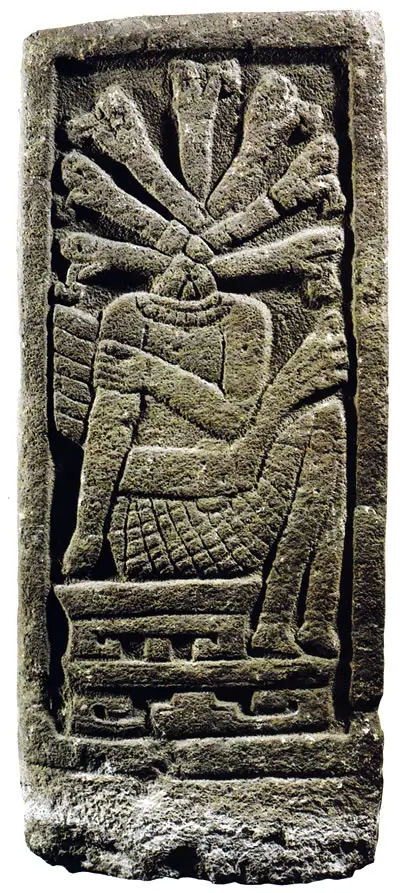 A decapitated player & beams of serpents
A decapitated player & beams of serpents
The reliefs on the walkways particularly stand out: they portray richly dressed players and the decapitation of one of them as a final offering to the creation of the Universe, which is why the blood which bursts from his neck is transformed into a beam of serpents, a fertility symbol par excellence. That is why the flowering plant that, as a climbing vine, also emerges from the decapitated man’s neck and covers the background, alludes to the main significance of this ceremony: the blood that was spilled in sacrifice nourishes the earth, thus allowing the continuity of life in the Universe.
Game, sport, or ritual: ulama symbolizes the sacred movement, vital and transcendent. It is the life that is transformed into death to perpetuate life; it is man’s blood that fertilizes the earth and wards off the spectre of hunger, allowing the continuity of human existence on earth and preventing the darkness of night from forever taking over the world.
Although the game of Ulama has been slowly disappearing since the Spanish Conquest, today we are fortunate to find that it is being recovered in various Mexican regions. The state of Sinaloa has the great merit of having kept the game alive until our days, spreading it to faraway regions such as the state of Quintana Roo, where it is played in Xcaret Park in various modalities and with courts constructed expressly for this purpose, for the good fortune and enjoyment of all those who visit.
Last Updated on 22/07/2022 by Puerto Vallarta Net



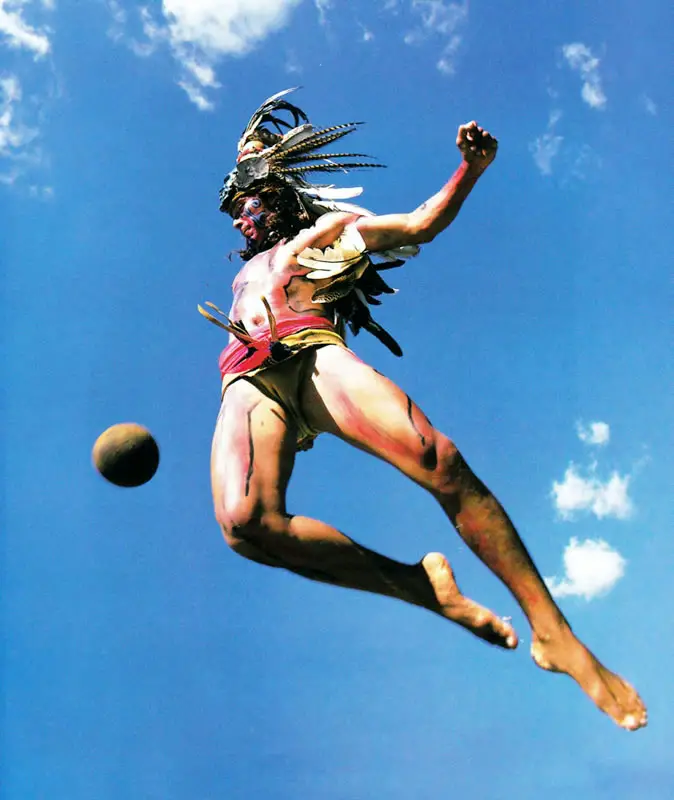
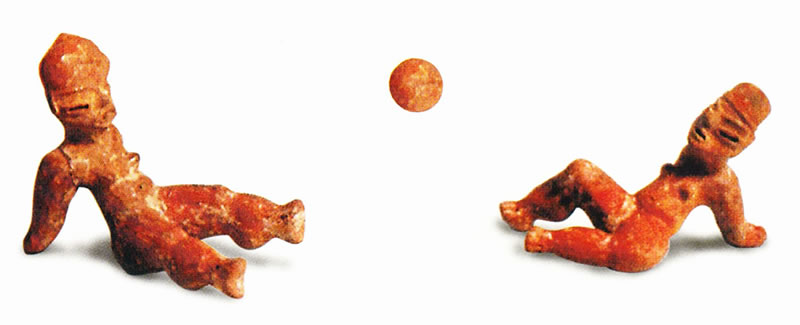
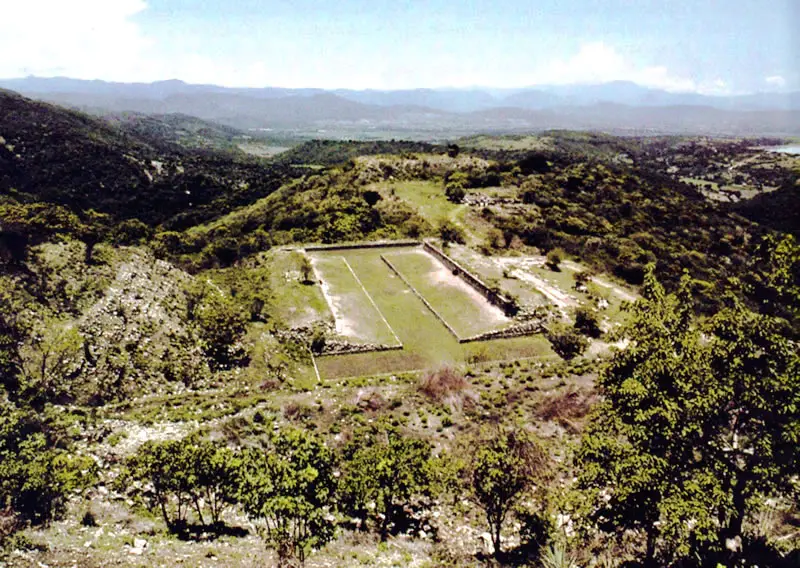
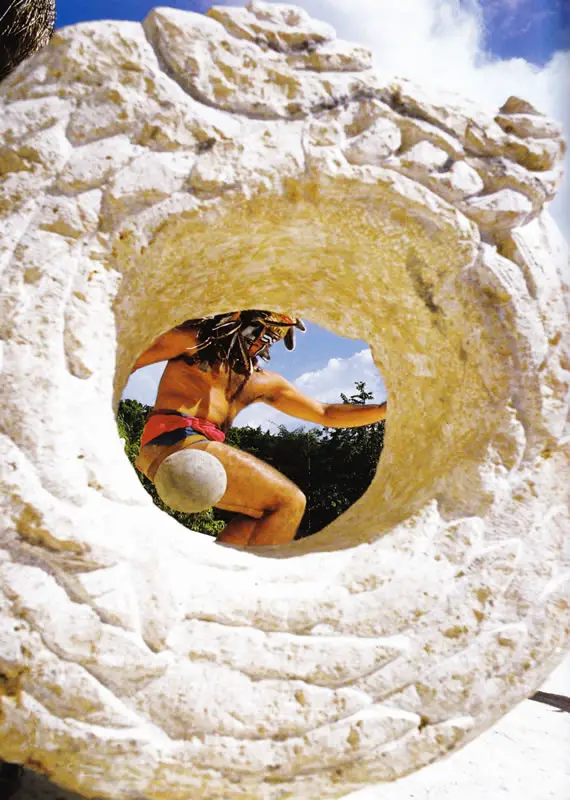

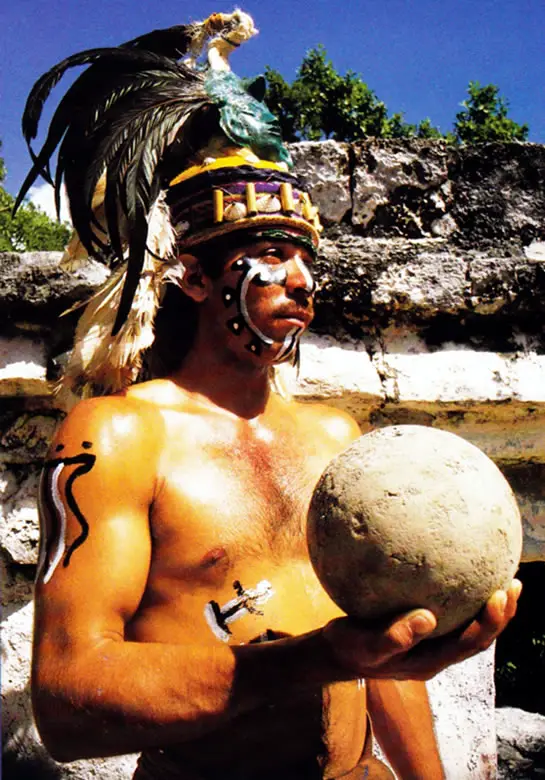 Sacred Ball Game Player
Sacred Ball Game Player
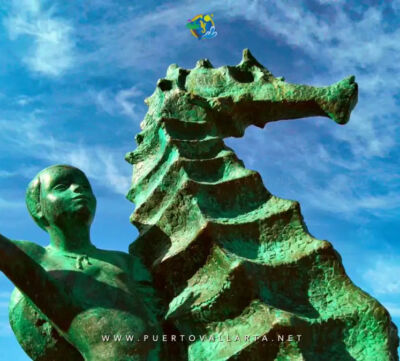


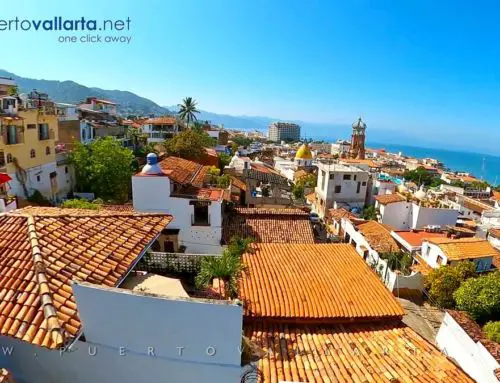

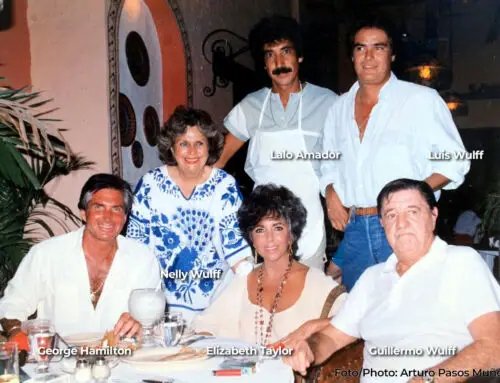
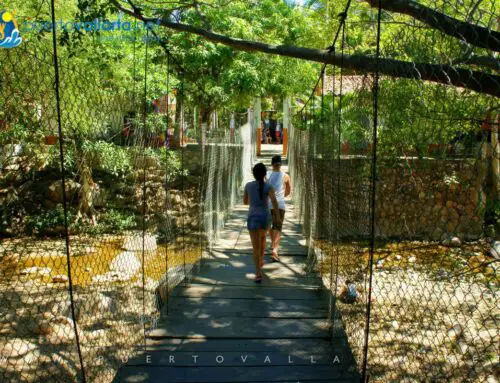
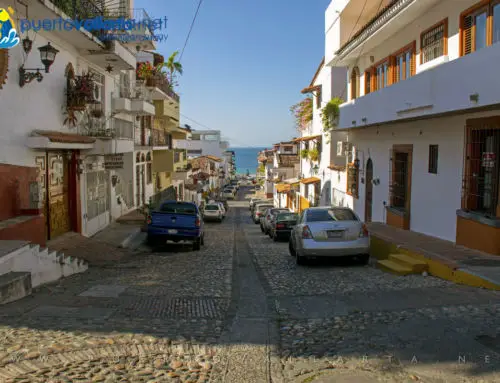
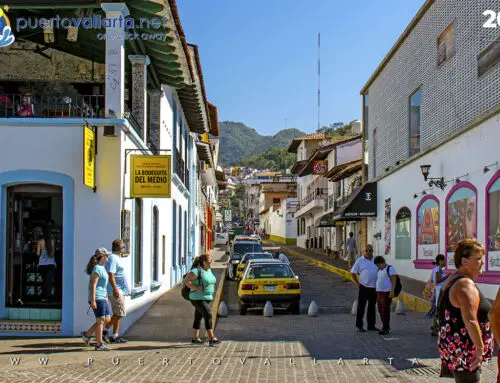
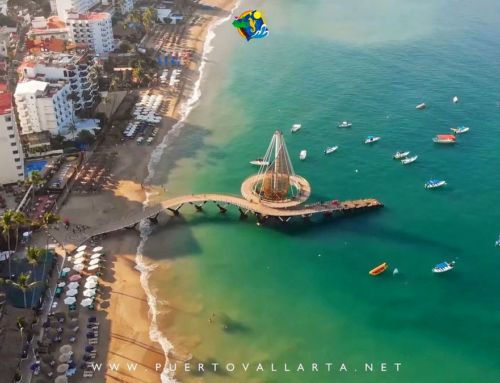
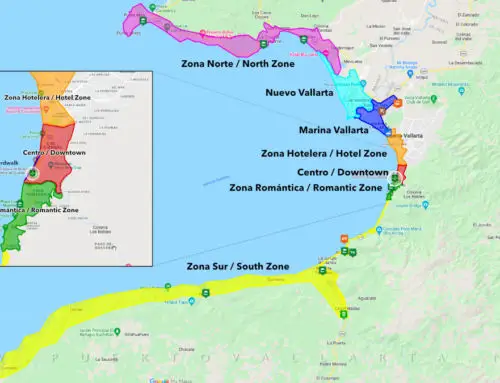
Leave A Comment